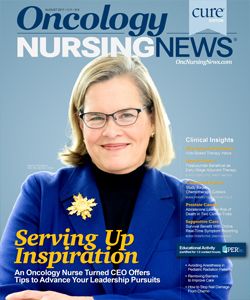Sunscreens: What You Need to Know
Confusion about sunscreen options and ingredients can lead to inadequate sun protection and increased skin cancer risk. The Environmental Working Group has resources to help.
Despite increased awareness of the dangers of sun exposure and a multibillion—dollar sunscreen industry, melanoma rates have tripled over the past 30 years. Sunscreen is recommended to protect the skin from harmful ultraviolet A (UVA) and ultraviolet B (UVB) rays. Did you know that half of the sunscreens sold in the United States do not provide enough UVA protection to be sold in Europe? Europe sets a higher bar, requiring UVA protection to rise in proportion with sun protection factor (SPF), which provides only UVB protection. UVA rays penetrate the skin more deeply than UVB rays and damage keratinocytes in the basal layer of the epidermis, which is where most skin cancers occur.
UVA rays are emitted by the sun and sunlamps used in tanning salons, the latter emitting doses as much as 12 times that of the sun. The Skin Cancer Foundation notes that use of tanning beds by teenagers and young adults increases their risk of melanoma by 75%.
With so many products available in the United States, which ones are safe and effective? People choose sunscreen based on its SPF and often assume that higher numbers of SPF confer better protection from damaging rays. However, higher SPF ratings do not necessarily offer greater protection from UV-related skin damage.
In 2017, the Environmental Working Group (EWG), a nonprofit, nonpartisan organization dedicated to protecting human health and the environment, issued its 11th annual Sunscreen Guide (available at ewg.org/sunscreen).
Did you know?
• One in 5 Americans will develop skin cancer in their lifetime
• More people develop skin cancer because of tanning than develop lung cancer due to smoking
• On average, a person’s risk for melanoma doubles if he/she has had more than 5 sunburns
Source: Skin Cancer Foundation skincancer.org
The EWG evaluated 880 beach and sport sunscreens, 480 moisturizers, and 120 lip products sold in the United States and found that 75% of the products contained less than the labeled SPF. Some also contained ingredients such as oxybenzone, a hormone disruptor, and retinyl palmitate, a form of vitamin A that actually may be harmful to the skin.
In 2011, the FDA determined that high SPF claims may be inherently misleading, and proposed to join most industrialized nations in capping SPF values at 50+. The ruling has not been finalized as of this year, so manufacturers continue their production of sunscreens with very high SPF ratings. The concern is that consumers may misuse the sunscreens with a higher SPF label by staying out in the sun longer. They assume an SPF 100 gives them twice as much protection as an SPF 50, but that is not the case. In 2007, only 10 sunscreens evaluated by the EWG claimed an SPF of 70 and higher. Ten years later, 69 products make this claim, with 13 advertised as having SPFs of 100 or higher.
Further, although 30% of sunscreens are available as sprays, they may not provide a thick-enough even coating on the skin and pose an inhalation risk. In 2011, the FDA indicated it would ban spray sunscreens unless their manufacturers submitted evidence that they protect the skin and pose no safety hazards. Until this happens, the EWG cautions people to avoid sunscreen sprays.
Also in 2011, the FDA set new sunscreen rules that removed false marketing claims, such as use of the words “waterproof” and “sweat-proof” from product labels. The FDA now requires that sunscreen labels include warnings about the risk of skin cancer and the skin aging effects of sun exposure.
The 2014 Sunscreen Innovation Act, which amended the US Food, Drug, and Cosmetic Act of 1938, expedites the FDA’s review of new sunscreen ingredients. The law gave the FDA 1 year to respond to its backlog of sunscreen ingredient approval requests, and 18 months to reply to any future applications, with the goal of accelerating the review and approval of effective sunscreen ingredients that have been available in Europe for the past decade.
The EWG’s Sunscreen Guide is available at no cost online and provides a comprehensive overview of sunscreen product safety and efficacy. Oncology nurses can use this resource to not only educate our patients, but to educate people in our communities as well.

Cemiplimab as Adjuvant Therapy Improves DFS in High-Risk Cutaneous Squamous Cell Carcinoma
January 20th 2025Adjuvant cemiplimab demonstrated a statistically significant improvement in DFS compared to placebo in post-surgical patients with high-risk CSCC, impacting post-operative care considerations.



